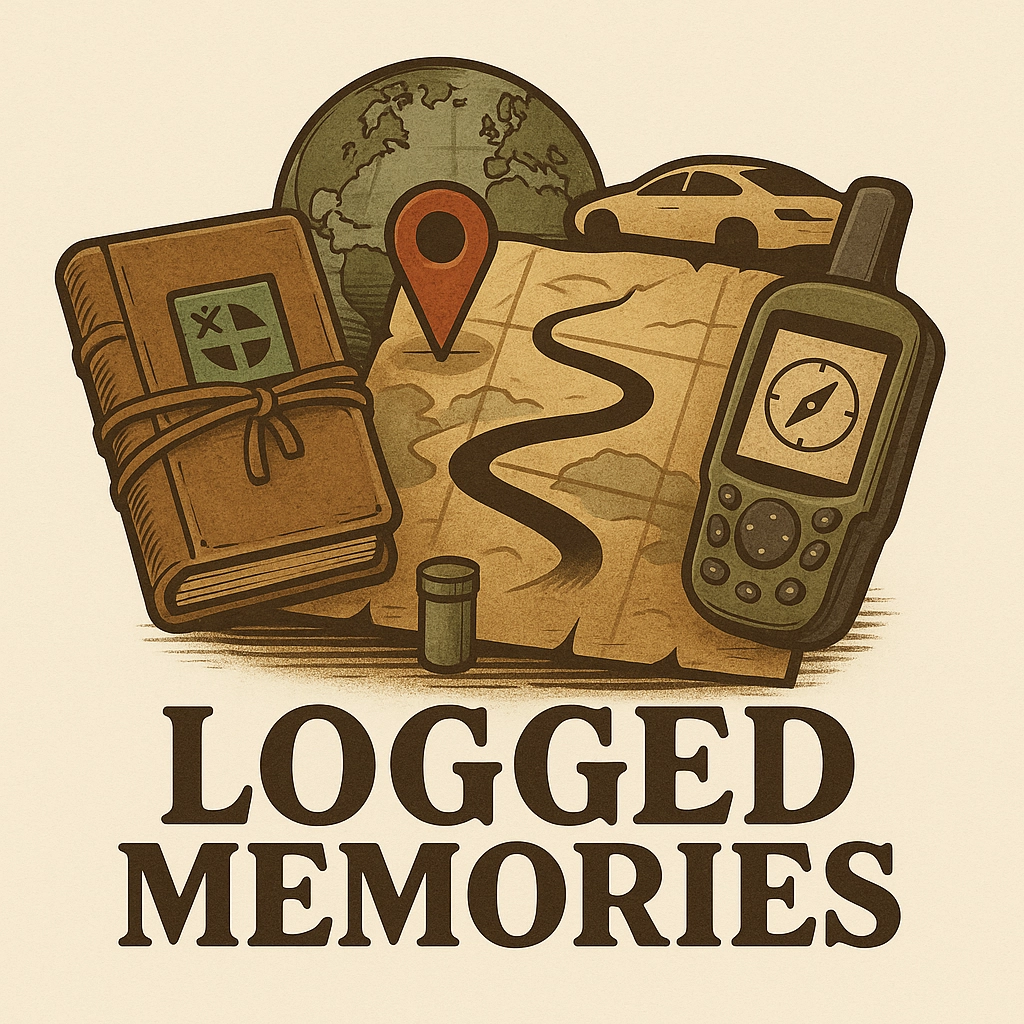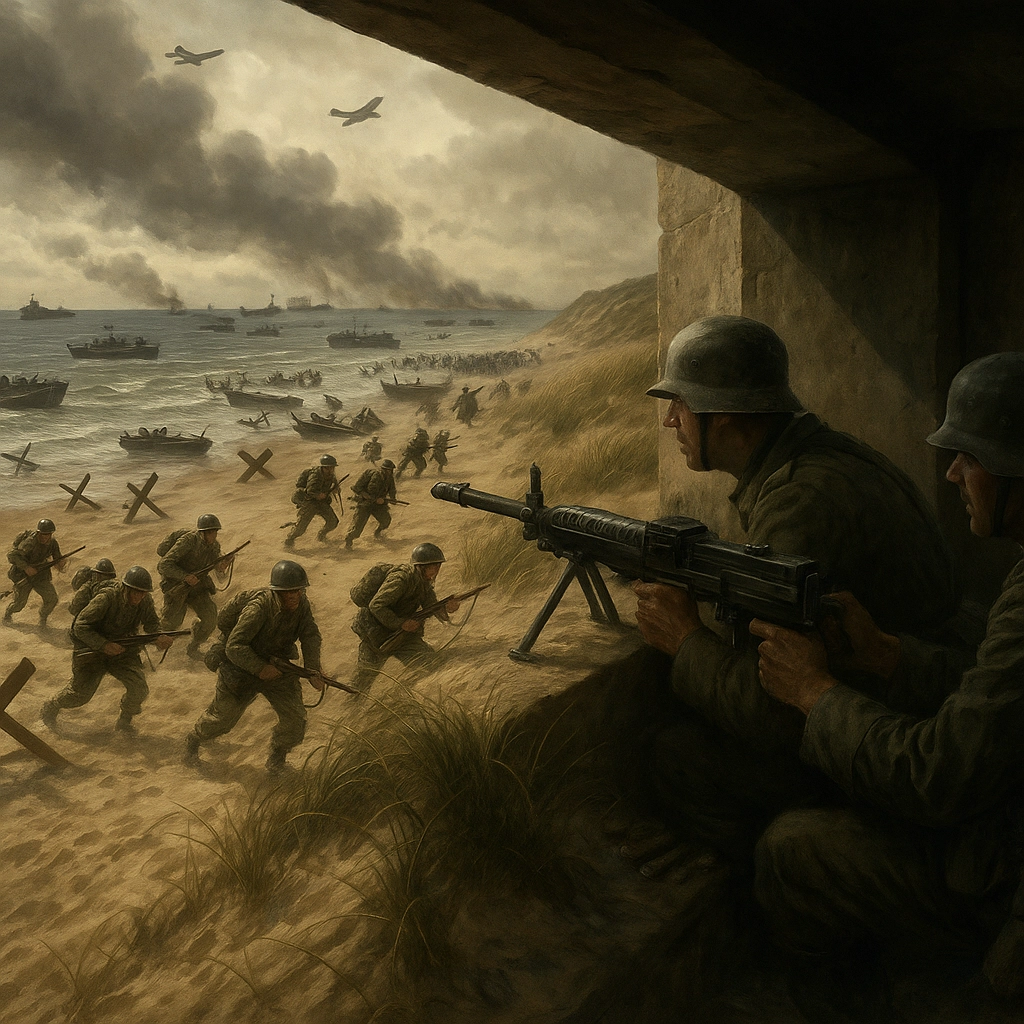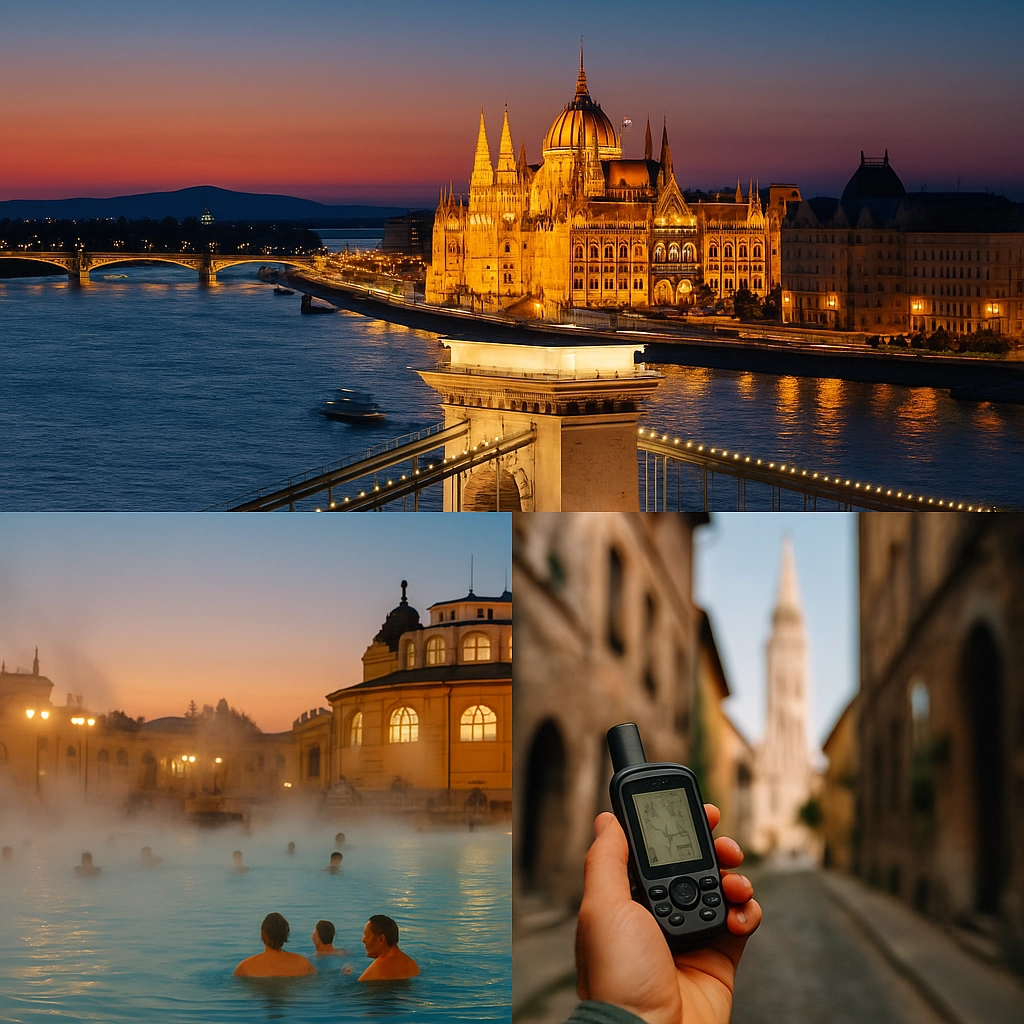Virtual Cache: GCD890 | Date: July 31, 2019
We were traveling through northern France as part of a home exchange with a French family, and I had plotted a few caches along the way. One of them was located at a site I had only known from history books and documentaries: Omaha Beach.
It was supposed to be a quick stop — just enough time to log a virtual cache. But the place grabbed me in a way I hadn’t expected. It became one of the most emotional moments of the entire trip.
📜 D-Day and Omaha Beach
Omaha Beach was one of five main landing beaches during the Allied invasion of Normandy on June 6, 1944 — better known as D-Day. The Americans were responsible for Omaha and neighboring Utah Beach, and Omaha met some of the fiercest German defenses in the entire invasion zone.

The beach was steep and narrow, with open sands exposed to machine-gun fire and artillery from the cliffs above. Roughly 2,500 American soldiers were killed, wounded, or went missing on this beach that day. Yet the Allies managed to establish a foothold that would eventually help liberate Western Europe.
Today, Omaha Beach in Normandy is peaceful and scenic, but its memory lives on through the landscape, museums, and memorials. It's an essential destination for anyone interested in WWII history, cultural heritage, or geocaching in France.
🌾 Echoes from 1944
The wind rustled through tall grass on the dunes, while waves lapped softly at the beach. It was peaceful, beautiful — and heavy. On June 6, 1944, thousands of young soldiers came ashore under fire. Many never made it past this point. It’s nearly impossible to comprehend what they experienced.
Walking from the beach today, in silence, past bunkers, remnants of artillery, and memorials — it's a moving experience. All the way up to the cemetery, the weight of history lingers in the air.
This place demands more than a glance — it's a deeply resonant reminder of Europe’s wartime history. It invites reflection and respect, showing that history lives on in the landscapes we travel.
📍 More Than Just a Cache
The cache I came for was a virtual with a simple logging task. But I quickly realized this wasn’t an ordinary stop. I stood at the memorial for a long time, letting my gaze sweep across the beach and the hills. Then I walked past bunkers and trenches — every meter marked by the scars of the past.
This wasn’t a cache to log and move on from. It was an experience that blended the personal with the historical. Perhaps that’s what geocaching is really about — discovering places we wouldn’t otherwise visit, and staying a little longer than planned.
⛪ Normandy American Cemetery
Just above the beach lies the Normandy American Cemetery. An Earthcache (GC61CGR) here leads you to a breathtaking view: rows upon rows of white crosses and Stars of David — 9,388 headstones, each one a name, a story, a future cut short.

The cemetery was established shortly after D-Day and is the first permanent American burial ground in Europe from World War II. It was chosen for its proximity to the landing site and its symbolic weight. Maintained by the American Battle Monuments Commission, it is now one of the most visited war memorials in Europe.
The marble used for the headstones comes from Lasa in northern Italy, known for its brightness and durability. Each stone is carefully shaped and aligned in perfect geometry — a symbol of dignity and respect. The crosses and Stars of David all face west, as if still looking homeward to the country they left behind.
There is also a visitor center at the cemetery with exhibitions and historical context. I didn’t have time to go inside on this visit, but it’s high on my list for the future.
❤️ A Quiet Moment on the Journey
There were no more caches that day. Not because there wasn’t time, but because it didn’t feel right. This stop called for silence and reflection. I walked among the headstones with a lump in my throat — but also deep gratitude. For peace. For freedom. For those who bore the impossible and made it real.
Some caches are just dots on a map. Others stay with you.
ℹ️ Facts and Travel Tips
Location: Omaha Beach, Normandy, France
Visited: July 31, 2019
Cache type: Virtual – GCD890: Omaha Beach
Access: Easy by car. Free parking at the visitor center and memorial. The area is pedestrian-friendly.
Recommended time: At least 1–2 hours to take in the cemetery and surroundings in peace.
Other caches nearby:
– Earthcache: GC61CGR – a great overview of the history and origins of the headstones
– Traditional: Several in the area — a great circuit through both landscape and history
🧱 Route Summary
This stop was part of a longer trip through Normandy and northern France, as part of a home exchange with a French family from Blois. Along the way we visited many key D-Day locations, including Omaha and Utah Beach, the Caen Memorial Museum, and the historic coastal town of Saint-Malo.
The trip was a blend of geocaching, history, nature, and everyday French life — and Omaha Beach turned out to be an unexpected highlight that left a deep impression.
The region is steeped in history. We only scratched the surface and should have set aside at least a week to explore the museums, restaurants, and memorials. Next time, perhaps.





Comments